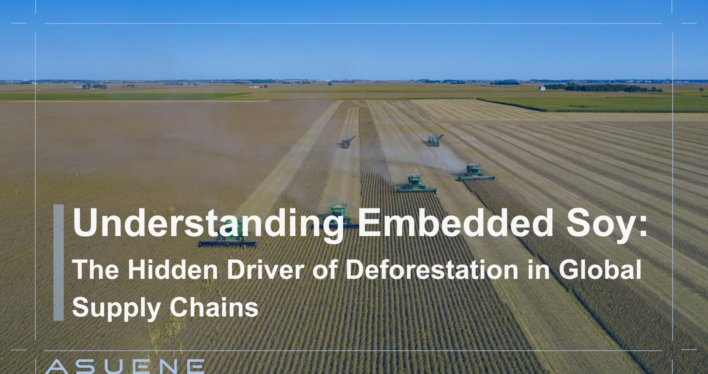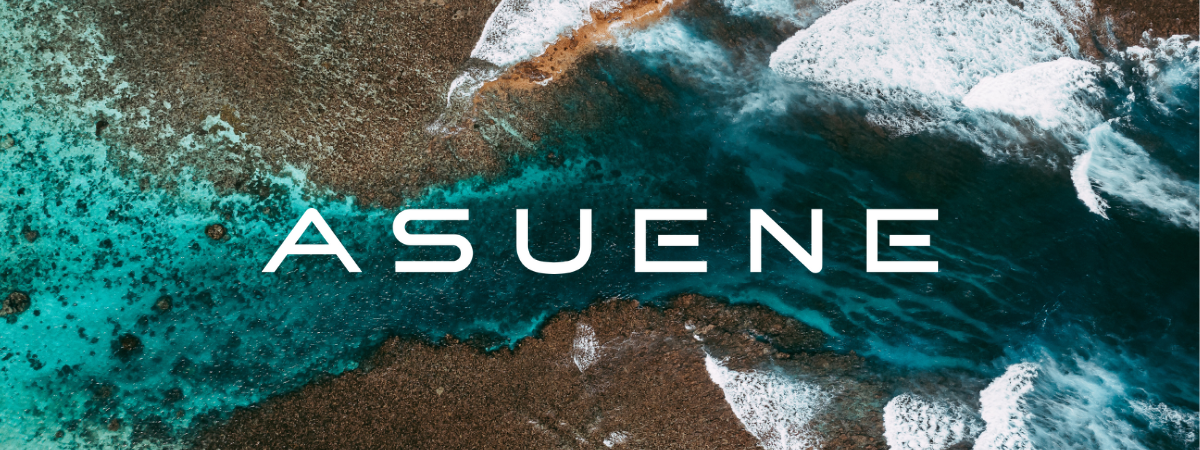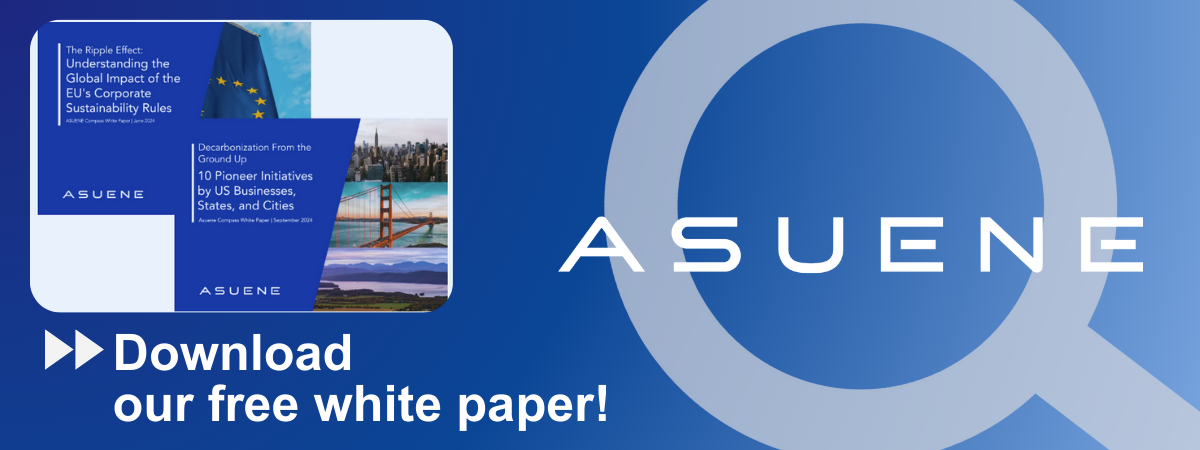- Article Summary
-
Overview
Embedded soy refers to soy that enters supply chains indirectly, often through livestock feed, processed food ingredients, or non-food industrial applications. While not visible on consumer labels, this hidden commodity drives large-scale land-use change, particularly in tropical and subtropical regions. Its presence in imported meat, dairy, leather, and other goods creates a substantial deforestation footprint for companies, especially those in the U.S. and Europe. As regulatory and voluntary frameworks evolve post-2025, understanding and addressing embedded soy is critical for effective ESG management.
The Scope of the Embedded Soy Problem
Soy production is one of the leading causes of deforestation worldwide. Although it is a valuable crop for food, feed, and fuel, more than 75% of soy is used as animal feed, embedding it in products like beef, poultry, pork, eggs, and dairy. This indirect presence means companies might underestimate their role in soy-driven deforestation.
Key Regions of Concern:
The Amazon Rainforest has long been affected by deforestation, much of it linked to the expansion of soy cultivation and cattle ranching. Although efforts have been made to reduce deforestation rates, soy remains a major driver of land conversion in this vital ecosystem.
In Brazil, the Cerrado Biome is now experiencing even higher deforestation rates than the Amazon. This region, rich in biodiversity and critical to carbon storage, is being rapidly cleared for soy production. Unlike the Amazon, it receives less international attention and regulatory protection, making it especially vulnerable to unsustainable agricultural practices.
Implications for ESG:
The presence of embedded soy in supply chains plays a significant role in increasing Scope 3 emissions, which are typically the largest and most challenging emissions for companies to measure and control. Since this soy often goes unnoticed, hidden in products like meat, dairy, or processed goods, companies may unintentionally contribute to deforestation and environmental harm. Failing to detect and manage embedded soy can also lead to serious regulatory issues, especially with laws like the EU Deforestation Regulation coming into force. Beyond compliance, it can damage a company’s reputation with environmentally conscious consumers and investors.

Policy Landscape: Detecting and Reporting Embedded Soy
CDP Forests
CDP (formerly Carbon Disclosure Project) is a global disclosure system for environmental impact. Its Forests questionnaire explicitly covers soy and requires disclosure of embedded soy in products. Key elements include:
- Deforestation Risk Mapping: Companies must identify where soy enters their supply chain and the deforestation risk in sourcing regions.
- Supply Chain Engagement: Reporting firms must engage suppliers, assess traceability, and disclose verification efforts.
- DCF (Deforestation and Conversion-Free) Metrics: Companies must disclose the percentage of soy volumes that are verified as DCF, including embedded soy.
CDP’s 2024–2025 updates emphasize supply chain-wide transparency and flag embedded soy as a priority commodity.
EU Deforestation Regulation (EUDR)
Coming into force in late 2025, the EUDR will prohibit the placement of products linked to deforestation post-December 2020 on the EU market. It includes:
- Due Diligence Obligations: Companies must trace soy, including when embedded, to its plot of origin and prove it’s deforestation-free.
- Scope Expansion: Applies not just to soybeans but also to embedded soy in meat, leather, and processed products.
- Geolocation Data: Required for verification, enhancing accountability.
This regulation is reshaping sourcing strategies. Danone, for instance, has already eliminated Brazilian soy from its supply chain.
Challenges & Gaps
There are several key challenges when it comes to addressing embedded soy in supply chains. One of the biggest problems is indirect visibility. Since soy is often used in animal feed or as an ingredient in processed foods, it passes through multiple stages before reaching the final product. This makes it hard to trace and verify where the soy originally came from.
Another issue is that current regulations, like the EU Deforestation Regulation (EUDR), mainly focus on forests. This creates a bias, leaving out important non-forest areas like Brazil’s Cerrado, which is also heavily affected by soy-driven deforestation.
Small and medium-sized suppliers in countries like Brazil and Argentina also face big challenges. Many of them don’t have the resources or technology to meet strict compliance rules. This could lead to them being excluded from international markets, even if they are trying to do the right thing.
Finally, while certifications are meant to assure sustainability, not all of them are reliable. Some deforestation-free claims rely on weak or unverifiable standards. As a result, companies may believe they are sourcing responsibly when in fact they are still linked to environmental damage.
These challenges show why it’s so important for companies to invest in stronger systems for tracking, verifying, and managing embedded soy risks.

Company Implementation & Verification Strategies
To deal with the challenges of embedded soy, companies are using simpler but effective strategies. One common method is satellite monitoring, which helps track where soy comes from and if it’s linked to deforestation. Services like Global Forest Watch can spot land changes almost in real time.
Some companies are also trying out blockchain systems. These can help make supply chains more transparent by showing exactly where the soy comes from, even when it’s part of animal feed or processed products.
Another step companies take is working directly with suppliers. They ask suppliers to report their practices and sometimes send third parties to check. This mix of self-checks and independent audits helps make sure suppliers follow rules about not sourcing from deforested land.
Certifications help too. Well-known ones like the Round Table on Responsible Soy (RTRS), ProTerra, and FEFAC guidelines give companies tools to check if their soy is produced responsibly.
For example, Bunge, a big soy trader, reports that almost all its soy from high-risk areas—97.6%—is verified as deforestation-free. They estimate how much embedded soy they use and then double-check using certification and satellite data. This kind of method helps companies manage their risks better and get ready for upcoming regulations.
Conclusion & Call to Action
Embedded soy is a serious but often ignored cause of deforestation and environmental risk. To deal with it, companies need to take clear and practical steps. They should start by learning where soy enters their supply chain, even when it’s not obvious. This means looking at products like meat, dairy, and processed foods where soy is used indirectly.
Using tools like CDP can help companies track and report their soy use. These platforms also make it easier to be transparent with customers and regulators. With the EU’s new deforestation rules coming into effect soon, businesses should act now. They need systems that can trace soy back to its origin and prove that it didn’t cause deforestation. Investing in better tracking technology, getting certified by trusted programs, and working closely with suppliers are all good ways to manage these risks.
Taking action now shows leadership, protects your brand, and helps save key ecosystems like the Amazon and the Cerrado. With regulatory deadlines approaching and public pressure mounting, taking action on embedded soy now offers a strategic ESG advantage—and helps protect some of the planet’s most vital ecosystems.
Why Work with ASUENE Inc.?
Asuene is a key player in carbon accounting, offering a comprehensive platform that measures, reduces, and reports emissions, including Scope 1-3, with expertise in decarbonization. Asuene serves over 10,000 clients worldwide, providing an all-in-one solution that integrates GHG accounting, ESG supply chain management, a Carbon Credit exchange platform, and third-party verification.
ASUENE supports companies in achieving net-zero goals through advanced technology, consulting services, and an extensive network.


